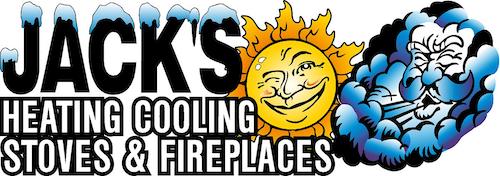
A furnace is usually a background player at home, ensuring you're warm across the cold winter months. It regularly won't be noticed until something breaks down.
One source could be that your furnace has a cracked heat exchanger. It can potentially be hazardous, so it’s critical to familiarize yourself with the signs of a cracked heat exchanger and what you can do if you believe that is the problem.
What Is a Heat Exchanger in a Furnace?
A heat exchanger helps move heat from the combustion chamber in your furnace to the air that flows inside the air ducts. It usually handles this through coils or tubes that heat up the air while serving as a barrier to keep gas created in the combustion chamber, called flue gasses, from leaking out into your home.
Is a Cracked Heat Exchanger Dangerous?
Given its important role, it isn't surprising that a damaged heat exchanger can pose a risk. A damaged heat exchanger can allow dangerous gasses – including carbon monoxide, which can be lethal – to circulate through your home.
For this reason, never run your heater if you think you're dealing with a cracked heat exchanger, as doing so could make the whole family sick. Contact an HVAC professional right away if you believe your heater has a cracked heat exchanger that should be repaired.
Four Symptoms of a Cracked Heat Exchanger:
- Furnace turns off: Cracks in the heat exchanger can cause your furnace to switch off.
- Odd Smells: If the air escaping your furnace has a powerful chemical odor, it might be an indicator that gasses are seeping through cracks in your heat exchanger. These gasses, which will often smell like formaldehyde, are a significant warning sign.
- Carbon monoxide alarm initiates or you feel health problems: If a cracked heat exchanger is relieving carbon monoxide into your home, your carbon monoxide alarm may go off or family members may start experiencing signs of carbon monoxide poisoning. Complications include headaches, dizziness, weakness, nausea, vomiting or feeling sleepy. If an alarm goes off or you feel unwell, exit the home right away and then call for help.
- Soot: If you spot black sooty buildup near the exterior of your furnace, it’s more evidence something could be seriously wrong.
What to Do if a Furnace Heat Exchanger is Cracked
If you believe your furnace has a cracked heat exchanger, hire a pro well versed in furnace installation Alliance as soon as possible so they can inspect your system and, if needed, perform a furnace heat exchanger replacement. Costs often vary depending on the situation, but estimates run in the neighborhood of $1,000 to $3,000.
Fortunately, the good news is that heat exchangers are generally covered by the warranty. You should check the warranty paperwork on your furnace, since while the warranty won't always cover the entire cost of repairs, it could significantly shrink your bill.
How to Prevent a Cracked Heat Exchanger in Your Home
One of the easiest ways to avoid problems in your furnace overall is through consistent furnace maintenance. Furnaces work the best when they run efficiently. Contacting a trained professional to inspect your furnace for worn-out parts, clogs in the air filters and other likely problems can help you avoid getting a big bill later on.
It’s also a good idea to review your furnace filters every few months – it’s ideal some filters be swapped out every 90 days or sooner if they are dirty or grimy. While the filters are not part of the heat exchanger itself, the strain of dragging air through a clogged filter makes your entire furnace work harder to accomplish its job. And the harder your furnace needs to run, the more strain pieces like the heat exchanger will sustain.
